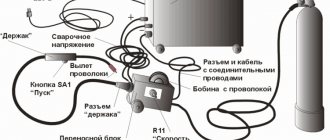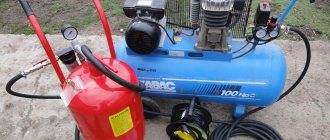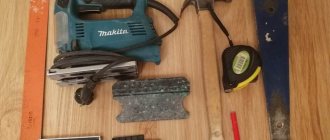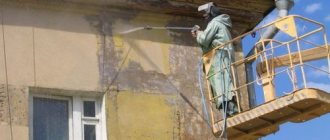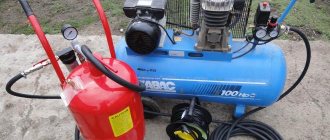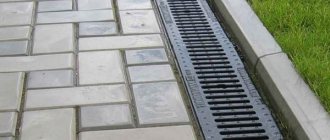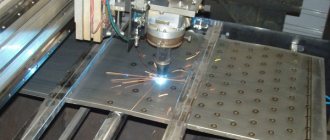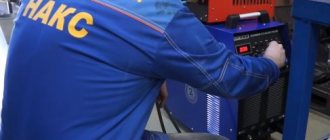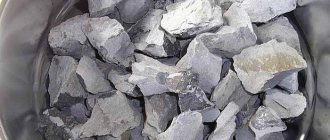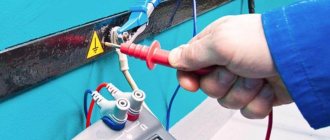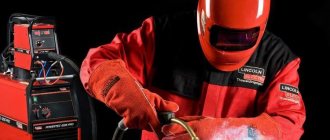Gasoline generators (gasoline power plants) are miniature autonomous installations for energy production, which are used as a backup or main source of supply. Gasoline generators are divided into several types according to power and direction of use. Below in the article we will figure out how to choose a generator for welding without resorting to specialists.
- Types and their features
- Design and principle of operation of the unit
- Model selection considerations
- Popular brands
- Operation and care
Types and features of generators
Generators running on gasoline are mainly used as a backup source to supply electricity to any objects or, if necessary, to carry out field work with power tools that cannot be connected.
Gasoline generators for welding are designed for temporary operation (for several minutes or hours). If you need to work for a long time without breaks, it is better to get a diesel generator.
Gasoline generators for summer cottages and recreation - this type of generators is the most popular among buyers. The stations can produce power from 0.7 to 5 kilowatts, and are quite easy to transport.
Gasoline generators for welding machines - a variety with a power of 5 to 10 kilowatts. They are well suited for intensive work for 8 hours. It is very important to know the engine manufacturer so as not to end up with an option that will make its shortcomings known within a month. An important parameter is the size of the fuel tank and the presence of a sound insulation casing and the ability to start the generator with an electric starter.
Scheme and structure of the device
Modern overhead valve generators can be compared with diesel ones in terms of the quality of the energy released. The units can provide very high performance while minimizing noise, and are compact and durable. It is advisable to buy this generator for welding if you plan to carry out work on a construction site or power a welding machine that periodically requires a powerful flow of energy.
A gas generator with a welding function for a cottage or enterprise produces power from 10 to 20 kilowatts. They are equipped with automatic start and are used as a stationary installation.
Which welding generator is better to buy?
The main parameters of a welding generator include current indicators. The higher the permissible value, the thicker the metal processed by the device using electrodes of different diameters.
For example, to weld a pipe with a thickness of 10 mm, a welding current of about 200 A and a rod with a diameter of 4 millimeters will be required.
The power and voltage parameters are affected by the expected load on the generator and the operating features of the tools that will be connected to it:
- For small household work using a drill or grinder, a voltage of 220 Volts is sufficient.
- More powerful construction equipment such as a concrete mixer or woodworking machine will require a three-phase 380 V connection.
The required generator power depends on the corresponding indicators of the connected electrical appliances, taking into account the starting current coefficient. So, to operate a grinding machine with a power of 2 kW and KPT 2, a 4-kilowatt unit will be sufficient.
We recommend including a power reserve of about 10% in your calculations to avoid breakdowns under peak loads. When choosing a generator, you should also consider the type of welding current.
AC powered units are used for minor garage and construction work with carbon steels. Such models are not distinguished by high seam quality, but are low in cost.
The use of direct current ensures smooth ignition and stable arc burning, which is why generators running on it are more expensive. They are used for precise machining of aluminum or stainless steel.
The functions of voltage interruption and speed control will greatly facilitate the maintenance of the device and increase its reliability.
Recommendations: 11 best semi-automatic welding machines
15 best welding inverters
8 best welding transformers
What to look for when choosing
If you need high-quality welding, then you must clearly understand how to choose the right gas generator for welding. The continuity of welding will depend on it, which will directly affect its quality. A generator is also needed when it is not possible to connect to the electrical network. Thus, it will be an indispensable link in welding.
The most basic parameter is the maximum output power of a welding gas generator, which is often confused with power consumption. For some manufacturers, this parameter may be indicated directly in the technical data sheet or operating manual.
If the maximum power consumption is not indicated anywhere, then it is easy to calculate it yourself. You need to multiply the maximum welding current by the arc voltage. We divide the result obtained by the efficiency of the inverter itself.
Watch the video, selection criteria:
Example. Let the inverter to which the welding unit is connected have a maximum welding current of 180 A. The arc voltage of the inverter is usually 25 V, although it is different for each inverter. Before making calculations, be sure to check it with the value specified in the technical data sheet. The efficiency of almost all inverters is 0.85. Now we calculate the power: 180 x 25 / 0.85 = 5294 (W). This is the maximum power consumption.
To determine which gas generator with welding function is suitable for a specific inverter, you should add another 30% to the received power. This is necessary so that the generator does not operate at the limit, but in cruising mode. In our example, a generator with a power of 6882 W or 6.9 kW is suitable.
When calculating, you need to remember that power consumption is always expressed in “kW”. If you see the designation “kVA”, then this value indicates the generated power of the generators.
To convert generated power into consumed power, you need to use a simple conversion formula:
- 1 kW = 1 kVA x KM, where
- KM is the power factor, and kVA is the power consumption of the inverter.
- The KM of inverters always lies in the range of 0.6-0.7.
If your budget does not allow you to purchase a gasoline generator with a welding machine of the required power, you can go backwards and calculate which generator will handle the welding machine without damaging the welding process. To do this, you need to know the permissible current limit of the inverter, which should not be exceeded.
Example. Let's say you purchased a generator for a 3 kW inverter welding machine. To calculate the maximum current, you need to multiply this value by the efficiency of the inverter itself (0.85) and divide by its arc voltage. So, 3000 x 0.85 / 25 = 102 (A). Thus, working up to 102 A, you can safely weld with a 2-3 mm electrode.
It is also useful to know the dependence of the peak power of a gas generator with a welding function on the diameter of the electrode:
- Peak generator power - 2.5 kW = 2 mm electrode diameter
- Peak generator power - 3.5 kW = 3 mm electrode diameter
- Peak generator power - 4.5 kW = 4 mm electrode diameter
- Peak generator power - 5.5 kW = 5 mm electrode diameter
Popular models
Model Endress ese 606
After considering the basic principles of selection, it is worth familiarizing yourself with the manufacturers. For evaluation, we took several different manufacturers in terms of unit power and price range.
Gasoline welding generators, based on the operating principle of the engines, are divided into:
- Two-stroke;
- Four-stroke.
Gasoline generators like HUTER DY6500L are especially effective in domestic conditions: at home, in the country, in the garage. They are not designed for long-term operation, but have distinctive characteristics. These mini-stations work perfectly in tandem with Svarog inverters.
Model Brima LT 8000B
Brima LT 8000B is a target device that works ideally with many Resanta inverters. When testing work together with Resanta SAI-190, it gave fairly good performance. In some cases, Brima can serve as a backup power source for a country house.
Endress ese 606 is a generator with a huge fuel tank in a high price category. Can work up to 2-3 times longer compared to conventional generators. The engine from the world famous Honda company minimizes fuel consumption. Works great with EWM inverters.
Generator care
Caring for gasoline generators for welding machines does not require significant time spent on maintenance. All you need to do is periodically check the oil level and add it if necessary. From time to time it will be necessary to recharge the generator battery.
Watch a video about the HUTER DY6500L model:
It is better to carry out operation indoors to protect from precipitation or use a special cover for installation. You can place it in a corner of the garage and not worry about precipitation getting on the unit.
You should not start the gas generator too many times in severe frosts (from -20 and below), such neglect of temperature changes in the device is fraught with rapid wear of the engine.
Results
It is worth saying that the above information is presented for conventional welding machines that are used in domestic conditions. When selecting a professional welding generator like the DDE DRV 160, it is worth referring to the advice in the instruction manual, since quite often some problems are observed when welding with a certain type of generator and manufacturers indicate this in the documentation.
The main reason for the incompatibility of generators and welding machines is considered to be the difference in characteristics in terms of power, however, this is far from the only parameter, although it is the main one. You can, of course, select a generator yourself using the above calculations, but it is advisable to contact specialists before purchasing.
How to choose a generator?
How to choose a generator? In fact, there is nothing complicated here. You only need to consider a few parameters: the power consumption of the generator, the maximum current of your inverter, the diameter of the electrodes you will use, and the compatibility of the generator with the device.
The first and second criteria are interconnected, we will talk about this later. But as for compatibility, here you need to pay special attention to the type of generator. There is a synchronous generator, inverter and asynchronous. There are also hybrids that can work both synchronously and asynchronously.
Now many beginners will probably say that there is nothing to think about here, you need to take an inverter. And therein lies the biggest mistake. Because to power the device, you must choose either a synchronous generator or a hybrid. They have sufficient power and are designed for high starting loads.
We also recommend purchasing a gasoline generator rather than a diesel one. It is not as economical, but with relatively low power it works many times better than a diesel generator. In addition, the choice of gasoline generators is much larger.
If you are selecting a generator for professional equipment (for example, for expensive semi-automatic welding machines), then keep in mind that their operation from a generator does not always go smoothly. Some manufacturers explicitly say this in their instructions. Therefore, in any case, consult a specialist in the store.
CHAMPION GW200AE (5000 W)
Photo: https://beru.ru
The Champion GW200AE gasoline generator is a very powerful welding machine and can also be used as an emergency source of autonomous power supply. This welding unit is equipped with a four-stroke gasoline engine with a carburetor, an air filter and an oil drain plug from the crankcase. For engine operation, leaded gasoline with an octane number of at least 92 is recommended. Engine power is 5000 W. This engine power with a unit weight of 85 kg is almost optimal, and allows the device to be used for a very large number of types of welding work.
CHAMPION GW200AE (5000 W)
Advantages:
- powerful
- long service life
Flaws:
- price
- heavy
Huter DY6500LXW (5000 W)
Photo: https://beru.ru
Gasoline electric generator Huter DY6500LXW, developed by engineers of the German concern. It is a compact, mobile, but at the same time quite powerful AC source. Such a unit always comes to the fore when there is a need to organize seasonal or emergency power supply. The DY6500LXW electric generator is equipped with a gasoline drive in the form of a four-stroke internal combustion engine with air forced cooling, electronic ignition, manual starting device, electric starter and a 22-liter fuel tank, as well as a single-phase synchronous generator machine (alternator). The engine produces 14 hp. The generating machine produces an operating power of 5 kW. The fuel supply allows the unit to operate uninterruptedly for about 10 hours. There is a socket for 220 V consumers and terminals for 12 V consumers, oil level control, short circuit protection. The quality of the output voltage is monitored visually using a voltmeter. The fuel is AI92 gasoline, but when installing special gas equipment, bottled gas can also be used.
Huter DY6500LXW (5000 W)
Advantages:
- powerful
- long service life
Flaws:
- heavy
- bad battery connection
Rules for using a gas generator
The lifespan of a generator largely depends on proper use. Compliance with the established rules begins at the start-up stage:
- By this time, the entire electrical load is turned off. The generator must be idling for several minutes, otherwise the power plant may be subject to significant overload.
- The oil level is at its standard level.
- Devices and equipment for welding with an inverter are allowed to be connected no earlier than after 5 minutes. During this time, the generator will warm up and function much more efficiently.
Generator winding - copper or aluminum?
There is no fundamental difference whether the generator winding for welding will be copper or aluminum. It will be possible to weld metal in both cases.
However, it is worth considering the fact that the copper winding of the generator has greater reliability, resistance to overloads and durability. Therefore, if you are choosing a gasoline generator for constant welding work, then it is better to give preference to one that has a copper alternator (winding).
How to choose power?
How much power does a generator need for a welding machine? Let's figure it out.
First of all, the power of the generator for welding should be 20-30% greater than the power of your welding inverter. This is necessary not only for stable arc ignition, but also for proper use of generator resources. It is not recommended to use the generator at its maximum power limit. Therefore, if you buy a generator that is a little more powerful, you will be able to set a more gentle mode for welding. This way you will extend the life of the device, and the arc will burn more stable.
Let's give a simple example. If you have an inverter capable of delivering up to 180 Amperes of current, then we recommend purchasing a 6-6.5 kW generator, taking into account the power reserve. Based on this information, you can independently select the generator power for the welding inverter if it has different technical characteristics.
